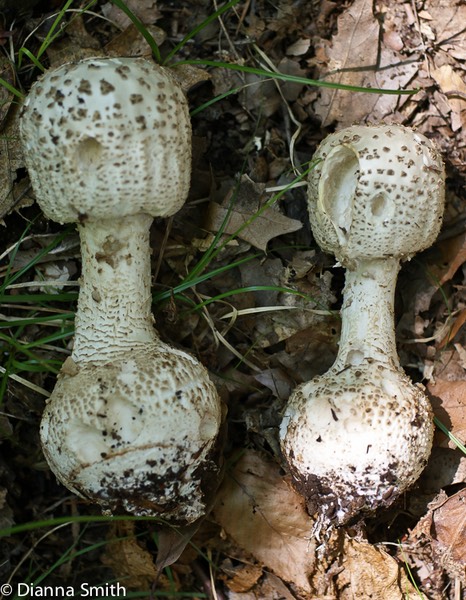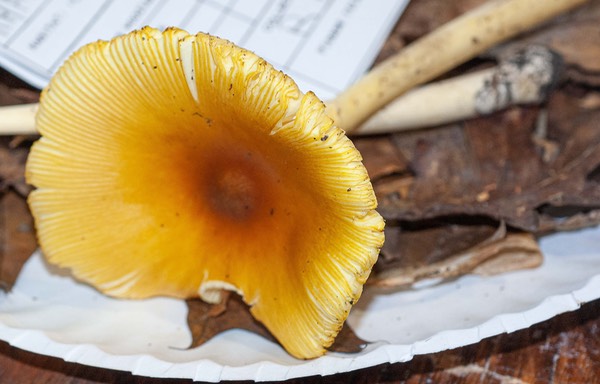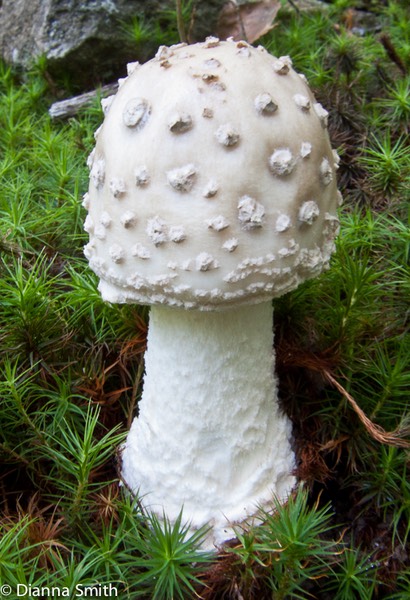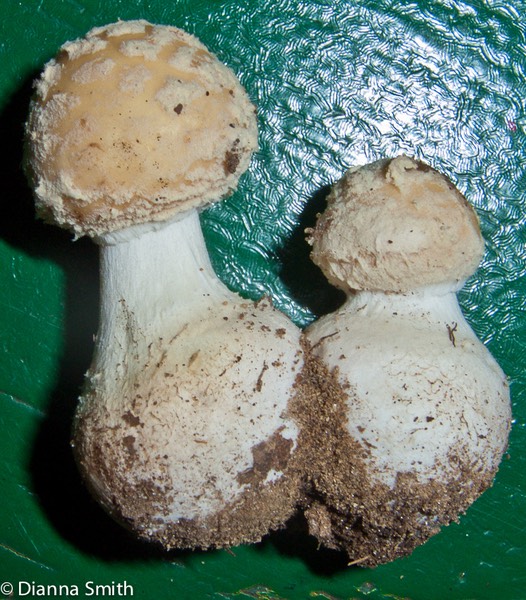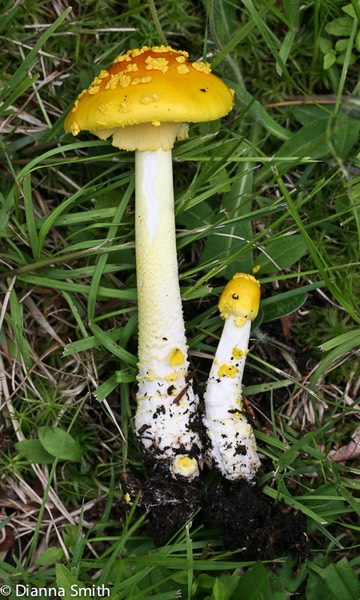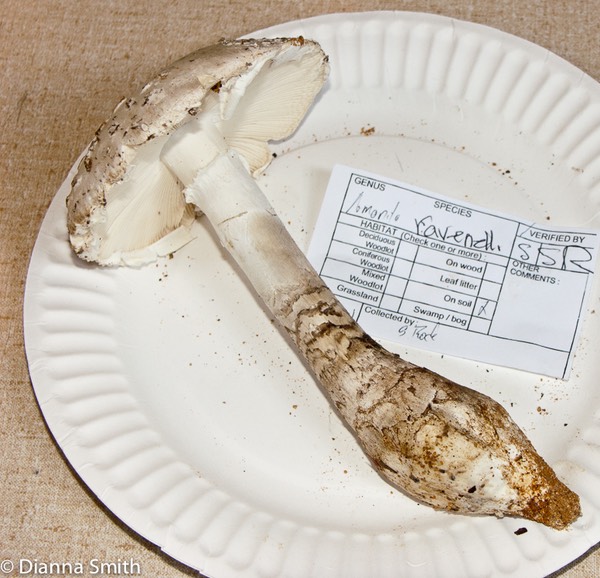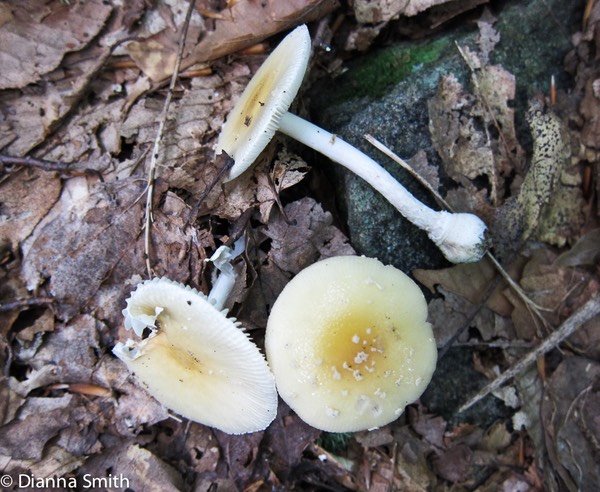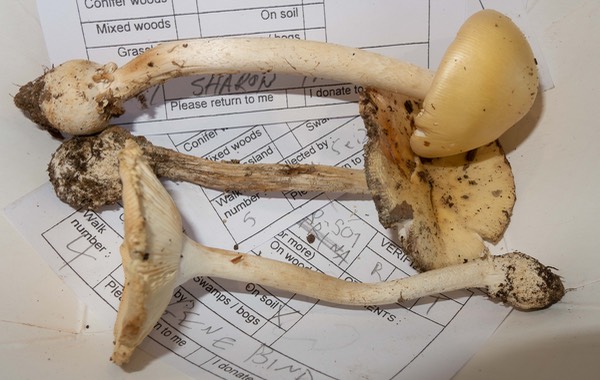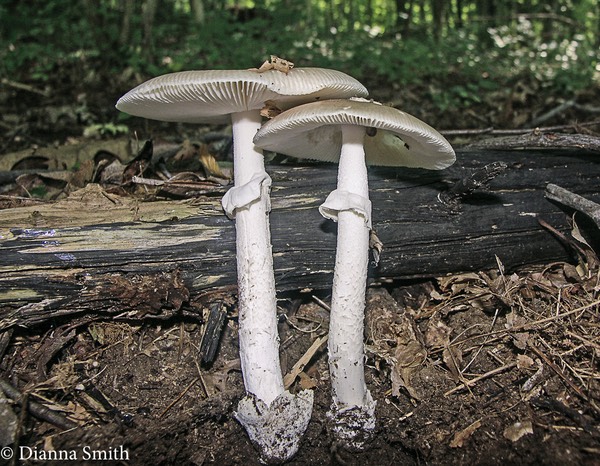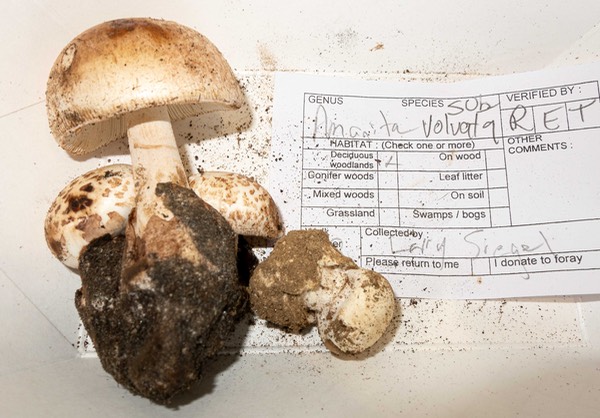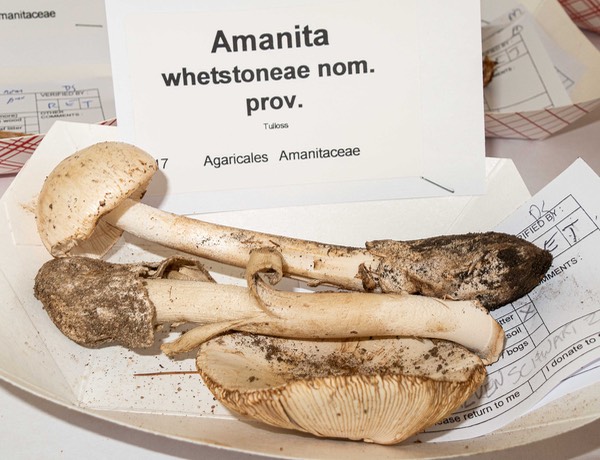The Amanitaceae family contains an estimated six hundred species within the genera Amanita, and Limacella. Although some species of Amanita are edible, most are not and quite a number are poisonous. Around the globe, 90% of deaths from mushrooms are attributed to consumption of Amanita phalloides, though others are also known to be deadly. For this reason and because it is not always easy to differentiate one species from another, especially if one is a novice, mycologists universally recommend that mushroom hunters generally avoid eating any members of this genus.
Amanitas are mycorrhizal associates of trees. Unlike other umbrella-shaped agarics, all species of Amanita exhibit bi-lateral gill tissue structure. Also unknown outside the family are the vertically oriented club-like inflated cells making up their respective stipes. These unique cells are being called acrophysalides.
There are 7 morphologically-definable groups and associated sections of Amanita.
1. Amanita sec. Amanita Powdery to floccose U.V. remains on bulb top; striate margins
2. Amanita sec. Vaginatae
3. Amanita sec. Caesare
4. Amanita sec. Amidella
5. Amanita sec. Phalloides
6. Amanita sec. Validae - (reddening amanitas)
For an in-depth study of Amanita species, I highly recommend the website of one of the world’s most respected Amanita expert, Rod Tulloss. His extensive website is http://www.amanitaceae.org.
To see enlarged versions of each amanita represented below, click on the first photo and then click on the textual links above each photo to get to the next one.



